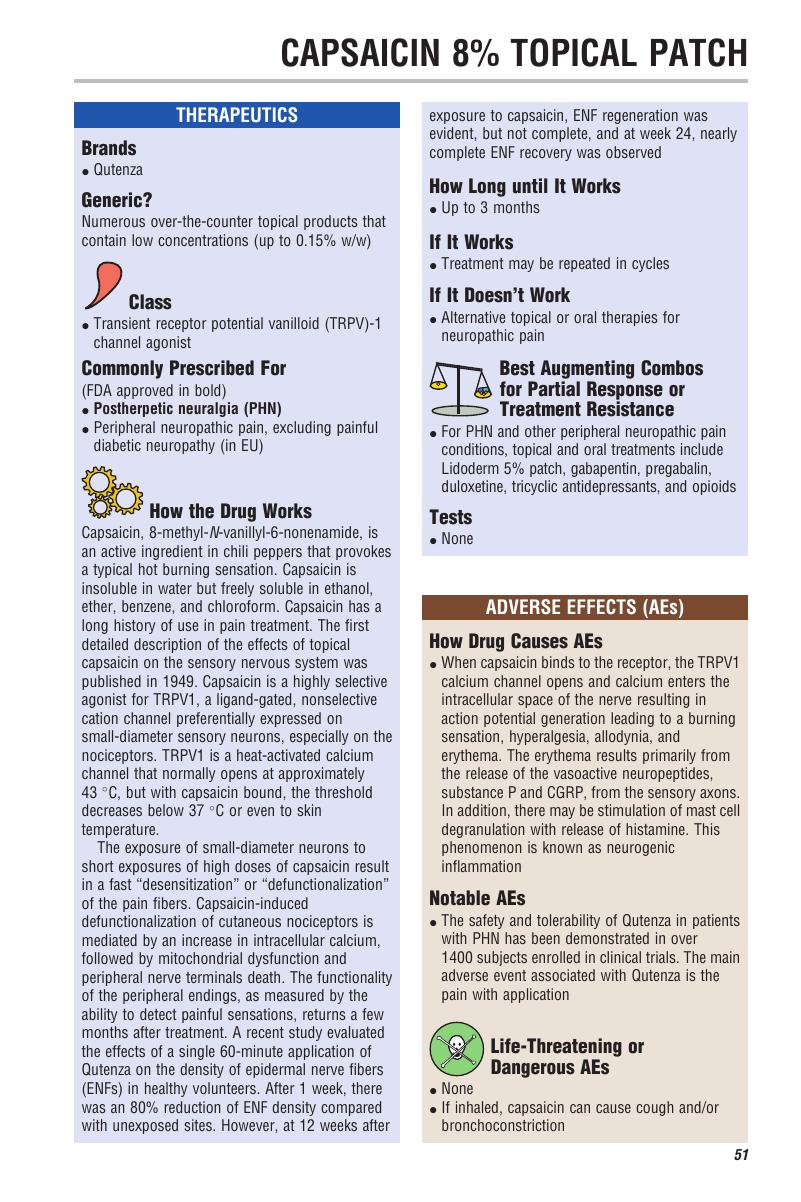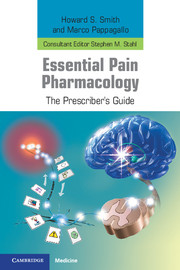Book contents
- Frontmatter
- Contents
- Introduction
- List of Icons
- Acknowledgements
- 1 Acetaminophen/Paracetamol
- 2 Almotriptan
- 3 Amitriptyline
- 4 Aspirin
- 5 Baclofen
- 6 Botulinum Toxin Type A
- 7 Botulinum Toxin Type B
- 8 Buprenorphine
- 9 Butorphanol
- 10 Calcitonin
- 11 Capsaicin 8% Topical Patch
- 12 Carbamazepine
- 13 Carisoprodol
- 14 Celecoxib
- 15 Choline Magnesium Trisalicylate
- 16 Citalopram
- 17 Clomipramine
- 18 Clonazepam
- 19 Clonidine
- 20 Codeine Sulfate
- 21 Cyclobenzaprine
- 22 Cyproheptadine
- 23 Dantrolene
- 24 Desipramine
- 25 Desvenlafaxine
- 26 Dexmedetomidine
- 27 Dextromethorphan
- 28 Diazepam
- 29 Diclofenac
- 30 Diflunisal
- 31 Dihydroergotamine (DHE)
- 32 Doxepin
- 33 Dronabinol
- 34 Duloxetine
- 35 Eletriptan
- 36 Escitalopram
- 37 Etodolac
- 38 Fenoprofen
- 39 Fentanyl
- 40 Flunarizine
- 41 Fluoxetine
- 42 Flurbiprofen
- 43 Fluvoxamine
- 44 Frovatriptan
- 45 Gabapentin
- 46 Hydrocodone
- 47 Hydromorphone
- 48 Ibuprofen
- 49 Imipramine
- 50 Indomethacin
- 51 Ketamine
- 52 Ketoprofen
- 53 Ketorolac
- 54 Lacosamide
- 55 Lamotrigine
- 56 Levetiracetam
- 57 Levorphanol
- 58 Lidocaine 5%
- 59 Maprotiline
- 60 Meclofenamate
- 61 Mefenamic Acid
- 62 Meloxicam
- 63 Memantine
- 64 Meperidine/Pethidine
- 65 Metaxalone
- 66 Methadone
- 67 Methocarbamol
- 68 Methylphenidate
- 69 Mexiletine
- 70 Milnacipran
- 71 Modafinil
- 72 Morphine
- 73 Nabumetone
- 74 Nalbuphine
- 75 Naproxen
- 76 Naratriptan
- 77 Nortriptyline
- 78 Orphenadrine
- 79 Oxaprozin
- 80 Oxcarbazepine
- 81 Oxycodone
- 82 Oxymorphone
- 83 Pamidronate
- 84 Paroxetine
- 85 Pentazocine
- 86 Piroxicam
- 87 Pizotifen
- 88 Pregabalin
- 89 Propranolol
- 90 Rizatriptan
- 91 Salsalate
- 92 Sertraline
- 93 Sulindac
- 94 Sumatriptan, Sumatriptan/Naproxen
- 95 Tapentadol
- 96 Tiagabine
- 97 Timolol
- 98 Tizanidine
- 99 Tolmetin Sodium
- 100 Topiramate
- 101 Tramadol
- 102 Valproic Acid and Derivatives (DPX)
- 103 Venlafaxine
- 104 Verapamil
- 105 Ziconotide
- 106 Zolmitriptan
- 107 Zonisamide
- Part 1 Nutraceuticals and Medical Food Preparations for Chronic Pain
- List of abbreviations
- Index by drug name
- Index by Use
- Index by class
- References
11 - Capsaicin 8% Topical Patch
Published online by Cambridge University Press: 05 October 2012
- Frontmatter
- Contents
- Introduction
- List of Icons
- Acknowledgements
- 1 Acetaminophen/Paracetamol
- 2 Almotriptan
- 3 Amitriptyline
- 4 Aspirin
- 5 Baclofen
- 6 Botulinum Toxin Type A
- 7 Botulinum Toxin Type B
- 8 Buprenorphine
- 9 Butorphanol
- 10 Calcitonin
- 11 Capsaicin 8% Topical Patch
- 12 Carbamazepine
- 13 Carisoprodol
- 14 Celecoxib
- 15 Choline Magnesium Trisalicylate
- 16 Citalopram
- 17 Clomipramine
- 18 Clonazepam
- 19 Clonidine
- 20 Codeine Sulfate
- 21 Cyclobenzaprine
- 22 Cyproheptadine
- 23 Dantrolene
- 24 Desipramine
- 25 Desvenlafaxine
- 26 Dexmedetomidine
- 27 Dextromethorphan
- 28 Diazepam
- 29 Diclofenac
- 30 Diflunisal
- 31 Dihydroergotamine (DHE)
- 32 Doxepin
- 33 Dronabinol
- 34 Duloxetine
- 35 Eletriptan
- 36 Escitalopram
- 37 Etodolac
- 38 Fenoprofen
- 39 Fentanyl
- 40 Flunarizine
- 41 Fluoxetine
- 42 Flurbiprofen
- 43 Fluvoxamine
- 44 Frovatriptan
- 45 Gabapentin
- 46 Hydrocodone
- 47 Hydromorphone
- 48 Ibuprofen
- 49 Imipramine
- 50 Indomethacin
- 51 Ketamine
- 52 Ketoprofen
- 53 Ketorolac
- 54 Lacosamide
- 55 Lamotrigine
- 56 Levetiracetam
- 57 Levorphanol
- 58 Lidocaine 5%
- 59 Maprotiline
- 60 Meclofenamate
- 61 Mefenamic Acid
- 62 Meloxicam
- 63 Memantine
- 64 Meperidine/Pethidine
- 65 Metaxalone
- 66 Methadone
- 67 Methocarbamol
- 68 Methylphenidate
- 69 Mexiletine
- 70 Milnacipran
- 71 Modafinil
- 72 Morphine
- 73 Nabumetone
- 74 Nalbuphine
- 75 Naproxen
- 76 Naratriptan
- 77 Nortriptyline
- 78 Orphenadrine
- 79 Oxaprozin
- 80 Oxcarbazepine
- 81 Oxycodone
- 82 Oxymorphone
- 83 Pamidronate
- 84 Paroxetine
- 85 Pentazocine
- 86 Piroxicam
- 87 Pizotifen
- 88 Pregabalin
- 89 Propranolol
- 90 Rizatriptan
- 91 Salsalate
- 92 Sertraline
- 93 Sulindac
- 94 Sumatriptan, Sumatriptan/Naproxen
- 95 Tapentadol
- 96 Tiagabine
- 97 Timolol
- 98 Tizanidine
- 99 Tolmetin Sodium
- 100 Topiramate
- 101 Tramadol
- 102 Valproic Acid and Derivatives (DPX)
- 103 Venlafaxine
- 104 Verapamil
- 105 Ziconotide
- 106 Zolmitriptan
- 107 Zonisamide
- Part 1 Nutraceuticals and Medical Food Preparations for Chronic Pain
- List of abbreviations
- Index by drug name
- Index by Use
- Index by class
- References
Summary

- Type
- Chapter
- Information
- Essential Pain PharmacologyThe Prescriber's Guide, pp. 51 - 54Publisher: Cambridge University PressPrint publication year: 2012



